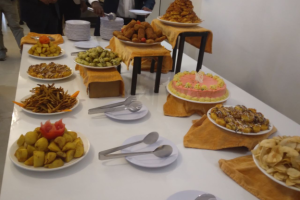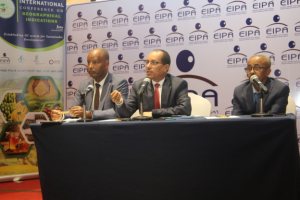
Ethiopian seed system is an merging system, which requires a wide engagement of the private sector, in terms of research, awareness, production and marketing. This engagement would reduce the government’s burden and enables it to monitor the appropriate implementation of the system, says experts.
Inputs and Crop Protection Programs Director at the Ethiopian Agricultural Transformation Agency (ATA), Yitbarek Semeane tells The Ethiopian Herald that the current seed system is mostly dependent on the involvement of the government beginning from production to transportation and supply.
According to him, this type of system has been creating bureaucracy and resulting unavailability of improved crop varieties at the right time, place and quantity for farmers, as weel as mismatch in demand and supply resulting shortages in some areas and excess in others.
It also caused a load on government structures in terms of finance, logistics and staff. Lack of accountability and traceability were also other drawbacks of the system.
“If the right seed variety is not provided on the right time based on demand, farmers would have no other option but to use less productive seed from their home storage and it would not enable them collect the fruits of their labour.”
Therefore, Semeane argues that it is essential to loosen this system, which is in the hands of the government and create a new one that invites more private actors, particularly investors.
While privatizing the sector it is also necessary to take cautions. In this case, preparing effective laws and regulations and establishing efficient executive structures are mandatory.
Dr. Eyasu Abrha, State Minister of Agriculture for his part says the major problem of the seed system is shortage for the fact that there is lack of proactive effort in identifying demand from the farmers at the right time. The other issue that the State Minister states as a challenge is the influence of pests that could affect the seasonal production which is dependent on rainfall.
Eyasu also stresses that “If there is no early generation seed, any effort of seed- multiplication has no value and there will not be quality. “Thus, we have given research institutes plan to intensify effort on early generation seeds of every variety. We are also working in involving the private sector in seed production by engaging unions,” he notes.
Meanwhile, he says the unions mostly face lack of output marketing, while they have access to input marketing capital money.
Mersha Assefa Cooperative Based Seed Production (CBSP) Project Team Leader at ATA On the other hand, says creating a self-sustaining cooperative-based seed production system requires transforming the primary seed producing cooperatives that are engaged in a fragile seed business environment into accredited and competent cooperative based seed producing companies.
The first move taken through the project was setting up seed unions in strategic locations in the four regions of Ethiopia. Following an in depth feasibility study, in 2016 and 2017, the CBSP project worked with 176 primary seed producer cooperatives to establish 8 seed specific unions and to restructure 5 existing multipurpose unions, an umbrella organization at zonal level.
These seed unions are operating in different geographies, commodities and scales across four major crop production regions of Ethiopia with more than 15,000 member farmers.
Even if the implementation could exceed the plan, the seed sector still needs to enhance seed producer’s capacity to assess or validate seed demand and produce accordingly, increase availability of standardized storage facilities, strengthen the inputs regulatory system in evaluation and certification of marketing agents and establish agents in additional geographies.
Dr. Eyasu stresses that, “We can import fertilizers from global market. But seed is a very serious issue that we have to deal within our national effort. For the next production year, collecting seed crops appropriately and effectively as well as using irrigation to avoid shortage is a priority option to increase production and productivity of the Nation’s agricultural sector.
Eyasu is hopeful that the scarcity problem of the seed sector would completely be addressed over the next two years.
(EPA)
BY MESERET BEHAILU





